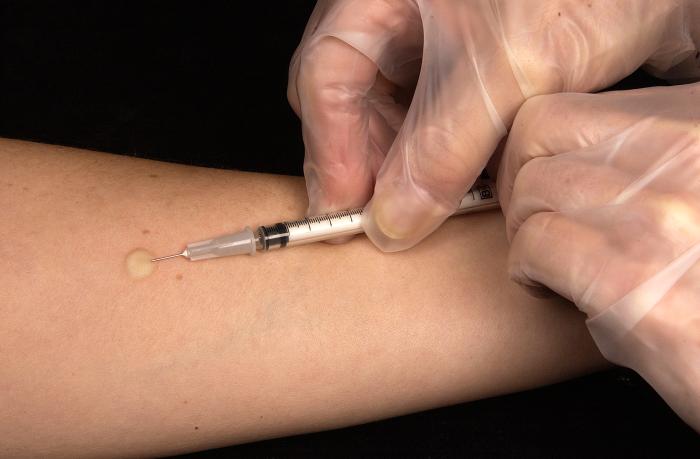Tuberculosis history and symptoms
|
Tuberculosis Microchapters |
|
Diagnosis |
|---|
|
Treatment |
|
Case Studies |
|
Tuberculosis history and symptoms On the Web |
|
American Roentgen Ray Society Images of Tuberculosis history and symptoms |
|
Risk calculators and risk factors for Tuberculosis history and symptoms |
Editor-In-Chief: C. Michael Gibson, M.S., M.D. [1]
Overview
The general symptoms of tuberculosis include weakness, weight loss, fever, and night sweats. Symptoms of pulmonary tuberculosis include cough, chest pain, and hemoptysis. Tuberculosis is particularly difficult to diagnose in children, as these may not present with the common findings.
History and Symptoms

Clinicians should ask about the patient’s history of TB exposure, infection, or disease. It is also important to consider demographic factors (e.g., country of origin, age, ethnic or racial group, occupation) that may increase the patient’s risk for exposure to TB or to drug-resistant TB. Also, clinicians should determine whether the patient has medical conditions, especially HIV infection, that increase the risk of latent TB infection progressing to TB disease.
When the disease becomes active, 75% of the cases are pulmonary TB. Pulmonary TB disease should be suspected in persons who have the following symptoms:
- Chest pain
- Hemoptysis (coughing up blood)
- Productive, prolonged cough for more than three weeks
- Unexplained weight loss
- Loss of appetite
- Night sweats
- Chills
- Fever
- Fatigue
- Pallor
In the other 25% of active cases, the infection moves from the lungs, causing other kinds of TB more common in immunosuppressed persons and young children. Extrapulmonary infection sites include:
- Pleura
- Central nervous system in meningitis
- Lymphatic system in scrofula of the neck
- Genitourinary system in urogenital tuberculosis
- Bones and joints in Pott's disease of the spine
An especially serious form is disseminated TB, more commonly known as miliary tuberculosis. Although extrapulmonary TB is not contagious, it may co-exist with pulmonary TB, which is contagious.[1]
References
- ↑ Centers for Disease Control and Prevention (CDC), Division of Tuberculosis Elimination. Core Curriculum on Tuberculosis: What the Clinician Should Know. 4th edition (2000). Updated Aug 2003.